Mapping the solutions landscape
Can we change a system we don't understand?
May 2, 2023
When we first began this learning journey on solid waste management in Panama, we felt like we were at a subway stop during rush hour. When we had some initial meetings on the subject, some recurring phrases were: "a lot is going on, but very scattered", "we step on each other's shoes, we are not coordinated" and "we all want to take action, but we do not agree with each other".
Like the parable of the elephant and the blind people, we seem to be able to understand the "parts" of the problem but struggle to see the whole - furthermore, each of us believes that the part we can touch is the most essential.
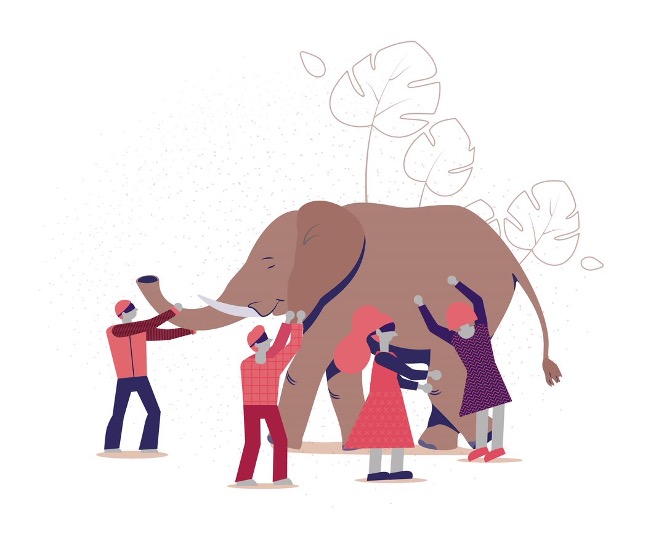
<Illustration of the blind people and the elephant>.
And yes, it is true, there are people taking action with a lot of will, creativity and ingenuity to create change from different fronts – also, in the words of many people we have spoken to, "we have a lot of what it takes to transform the waste system in Panama."
However, when we talk about waste management, we easily start pointing fingers. As you read this, you're probably pointing to an actor, which is natural. Donella Meadows, an environmental scientist, in her book "Systems Thinking," makes an intriguing point:
"We have to stop looking for culprits and think: what is the system?"
And from here, something else emerges. We often talk about systems, but it is not intuitive to know what we mean. To better understand this concept, we need to use "systemic lenses."
Simply put, Donella argues that a systemic lens allows us to reclaim our intuition about whole systems, to understand their parts, interconnections and functioning.
But, above all, ask a fundamental question, “what if...?"
Systems thinking involves being creative and courageous in redesigning the system we want to change (for the better). However, to change a system, we first need to understand it.
These concerns and ways of thinking have invited us to embark [together with you] on this learning journey, using these systemic lenses, in four phases:
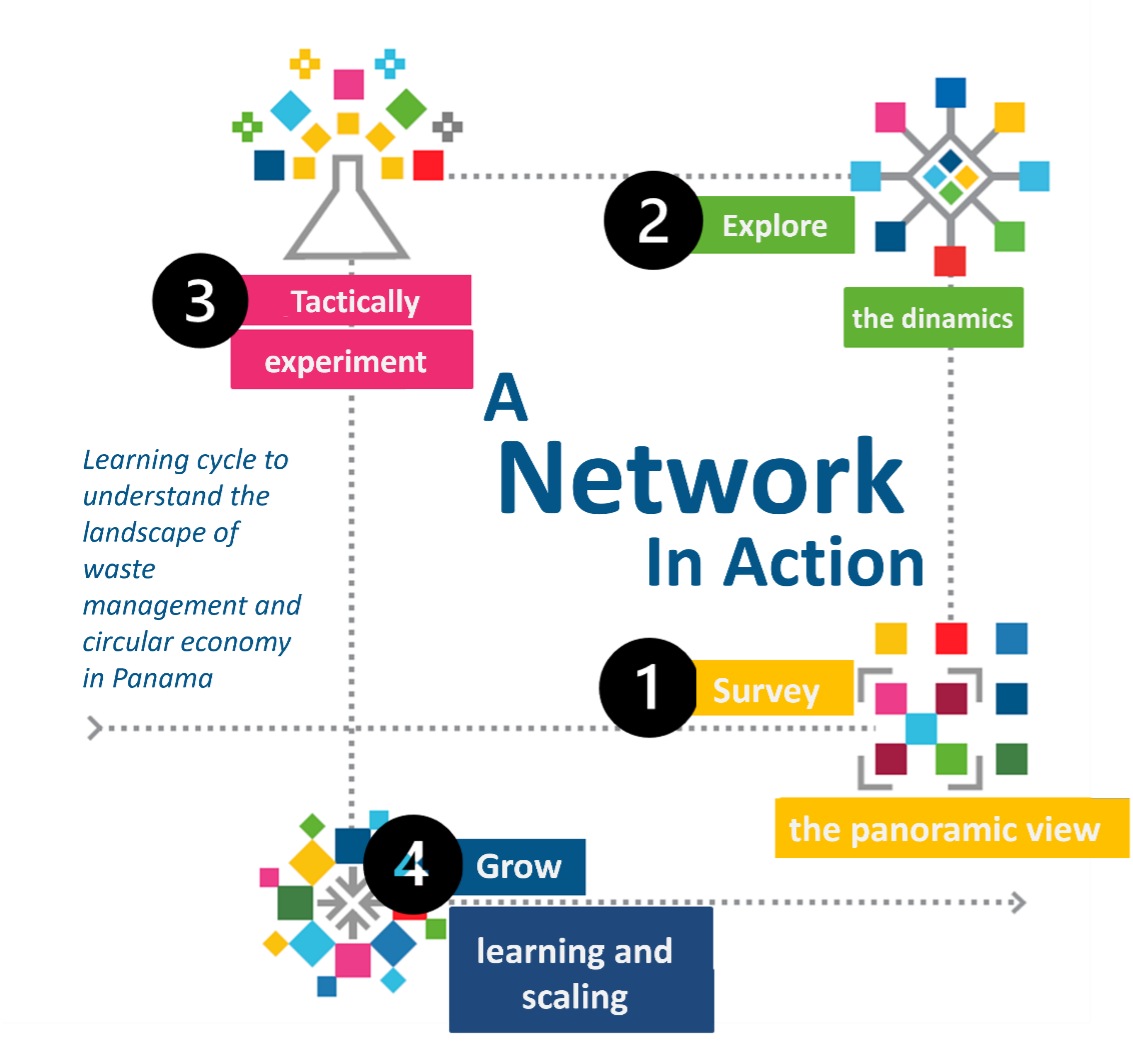
<Phases of this learning cycle>
Therefore, before jumping into thinking about solutions or even attempting to explain the problem, it becomes necessary to understand the landscape because waste management does not exist in a vacuum, and we have a country of many contrasts [and actors] that extend beyond what we see in Panama City.
Hence the first question in this learning process: what does the landscape of actors and solutions for the Circular Economy and solid waste management in Panama look like?
To map these solutions and actors, we used the Accelerator Labs Network solution mapping platform and a simple form that allowed us to understand the type of actor, the materials they work with, the stages of waste management and the sustainable development objective where they have an impact.
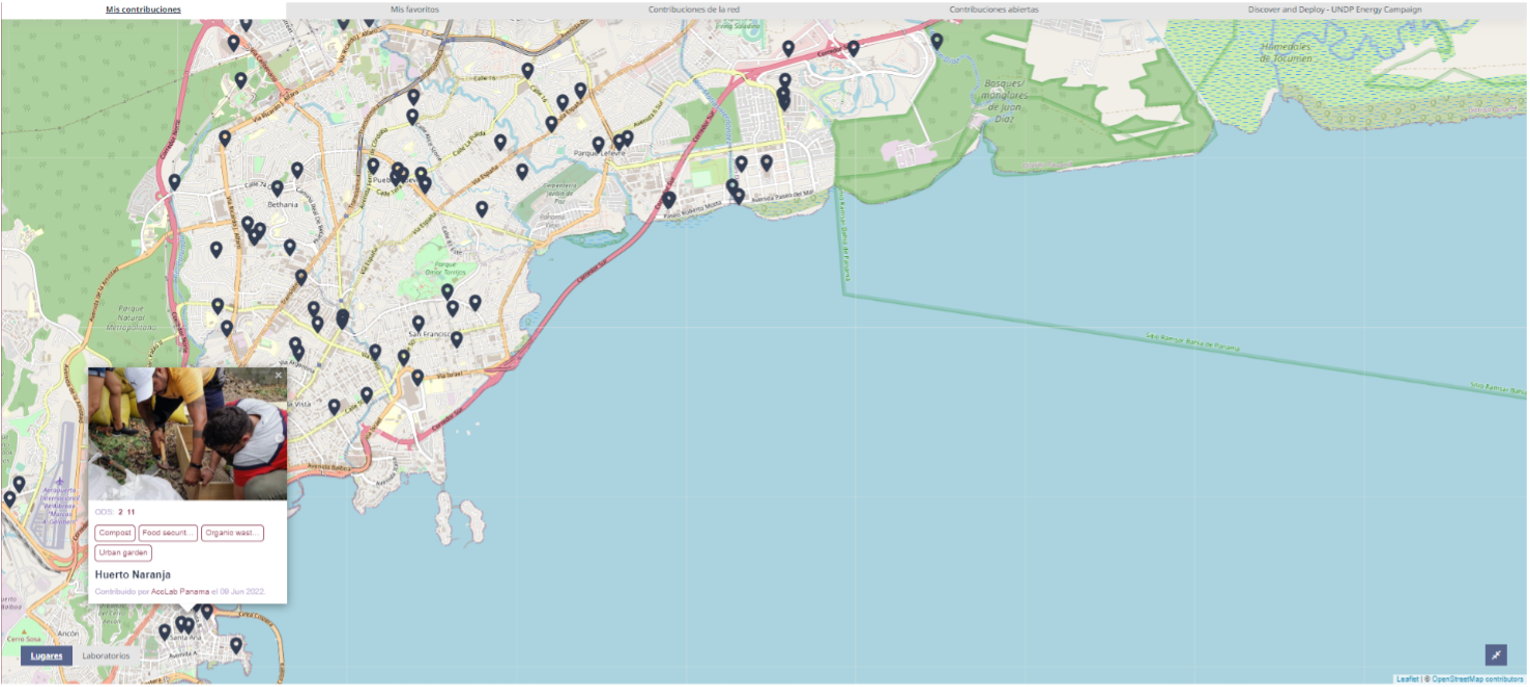
<Image of the solution mapping platform. You can access the demo of the interactive map here: https://experience.arcgis.com/experience/49b6c679627543d2ba39ee305dad6cc0/
We are well aware that this is not the first mapping done on this subject. There are a lot of mappings done by various organizations. Based on one of the principles of the UNDP Acceleration Labs, we seek to build on what already exists and explore and visualize its dynamics to generate a shared vision.
So, in collaboration with several UN volunteers, we set out on a mission to do a "mapping of mappings" to visualize that initial landscape - and these were the main sources we used:
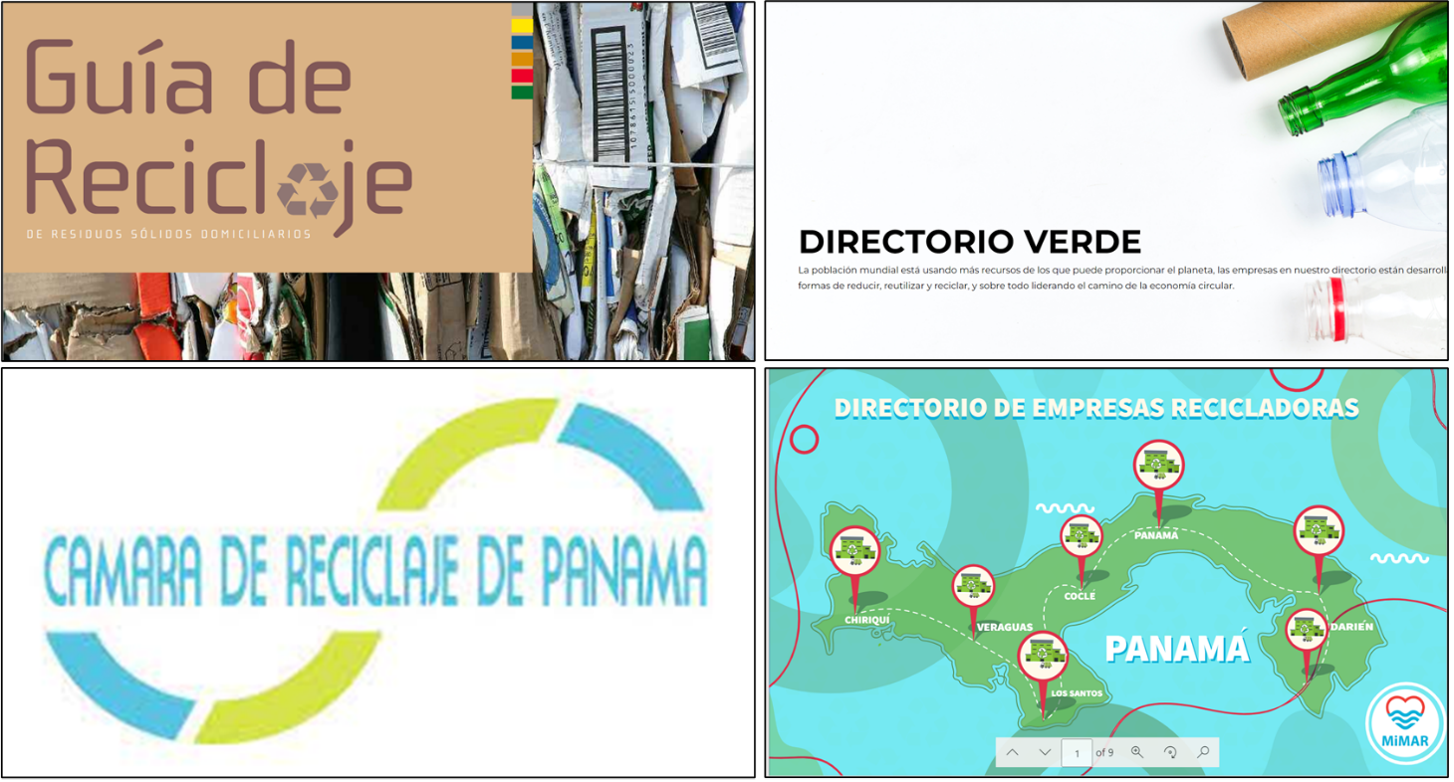
<Image of the main sources for mapping. For this process, we also included actors from the Network of Solutions for the Circular Economy in Public Market (Red de Soluciones para la Economía Circular en Mercados Públicos) created by the San Felipe Neri Market.
In total, we identified more than 200 solutions and actors influencing this issue at the national level. Indeed, they are not all comprised- and the landscapes are not static. However, some interesting patterns emerged from this panoramic view:
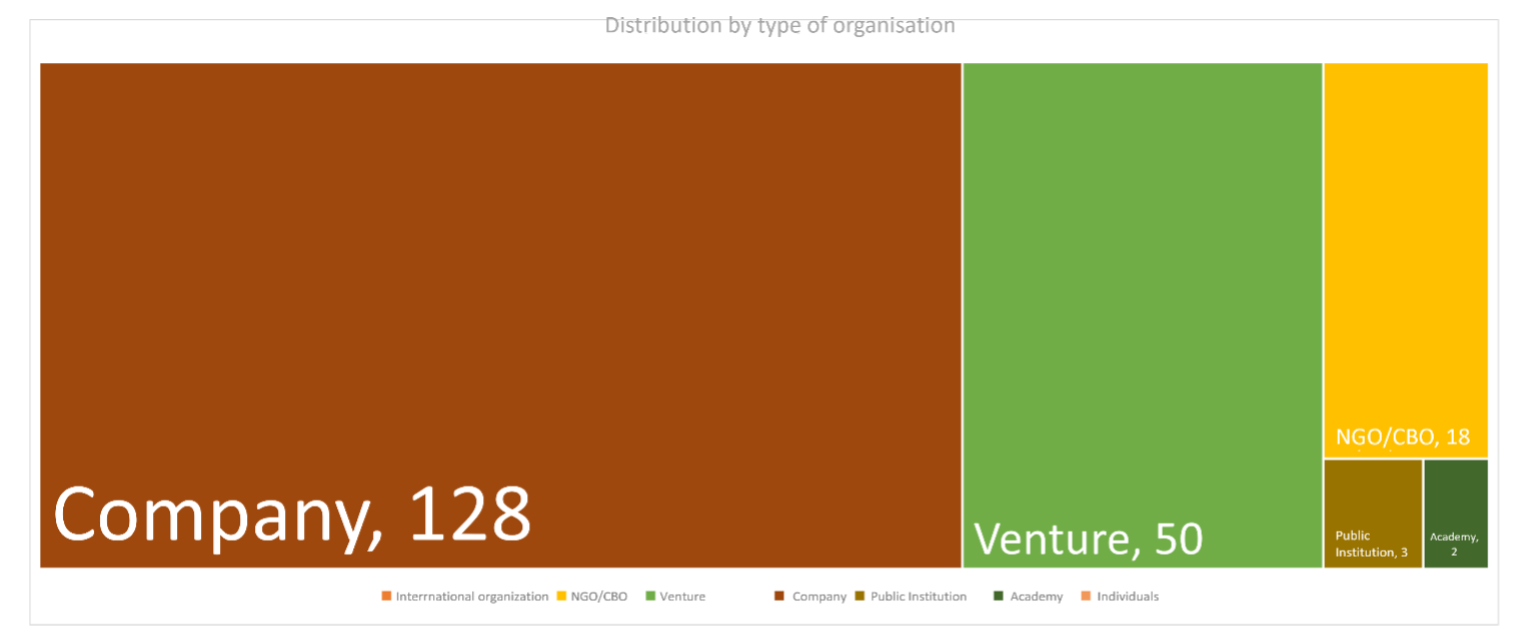
<Distribution of stakeholders by type of organization>.
More than half of the solutions mapped are recycling companies (128). Many are micro, small and medium-sized enterprises (SMEs) engaged in metal recycling. Most of these were mapped in the 2014 recycling guide (9 years ago) - and a good portion of these may no longer exist due to China's recycling import bans, which intensified in 2018.
On the other hand, in more recent directories such as MiMar (2021) or Costa Recicla (2022), we find many more community based organizations and micro and small business initiatives (68) - and surely there are more that are not in these directories that need to be included to understand the landscape better. Most of them are more oriented towards a Circular Economy perspective and/or technological/digital innovation within their processes.
In the results of this initial mapping, there is little visualization of the initiatives of public institutions. However, we know that many of these have more national scope and - linked to other actors in the territories, have the potential to increase their impact.
The mapping also allowed us to identify interesting relationships between these solutions and actors with different materials.
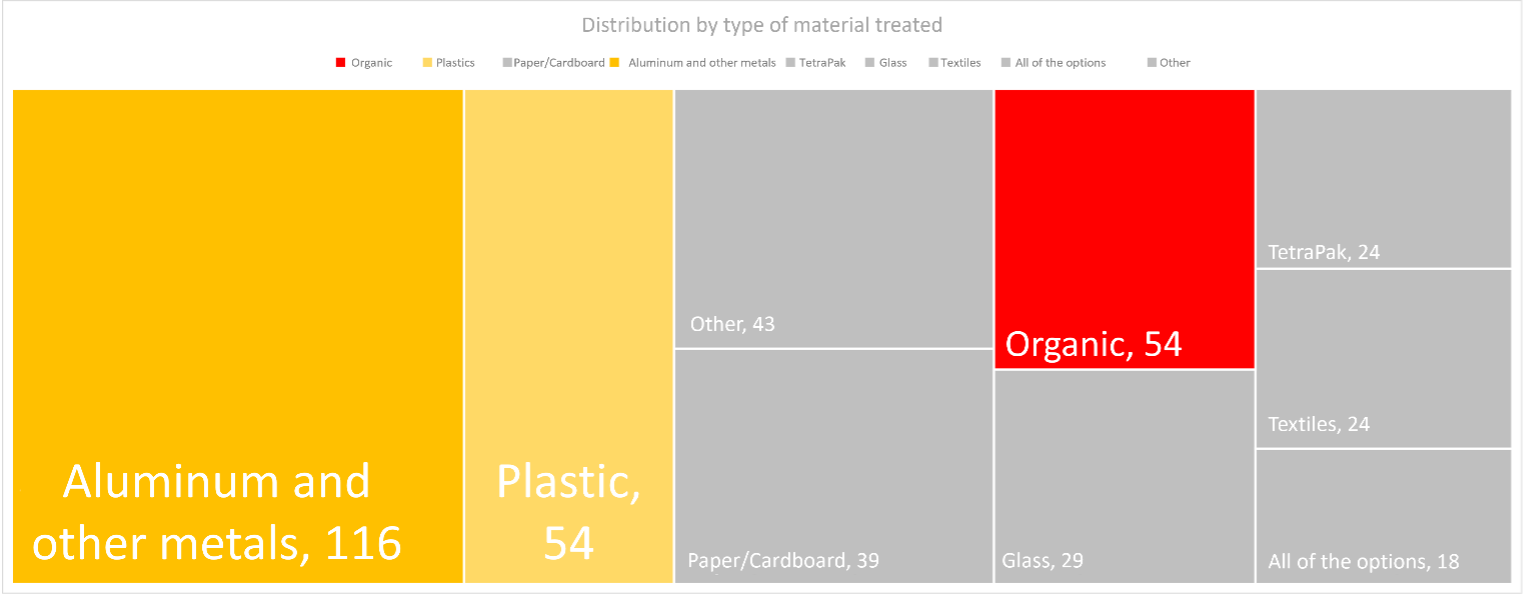
<Distribution by type of material treated>.
For example, the material with which the actors deal the most is metal (116). This is possibly because there is a value chain and an attractive market for the recycling of these materials. Next on the list are solutions for plastics (54), paper and cardboard (39). For organic waste, which is the most common type of waste generated in the country, we found 38 solutions.
Finally, in national legislation, the elements or stages of waste management are origin, separation, collection, treatment and final disposal.
The mapping showed that it is necessary to better understand the role of each actor at each stage. It would appear that a large majority of solutions are part of every stage of waste management. Still, this data may be somewhat misleading - more exploration is needed to create a shared language around definitions and roles related to waste management.
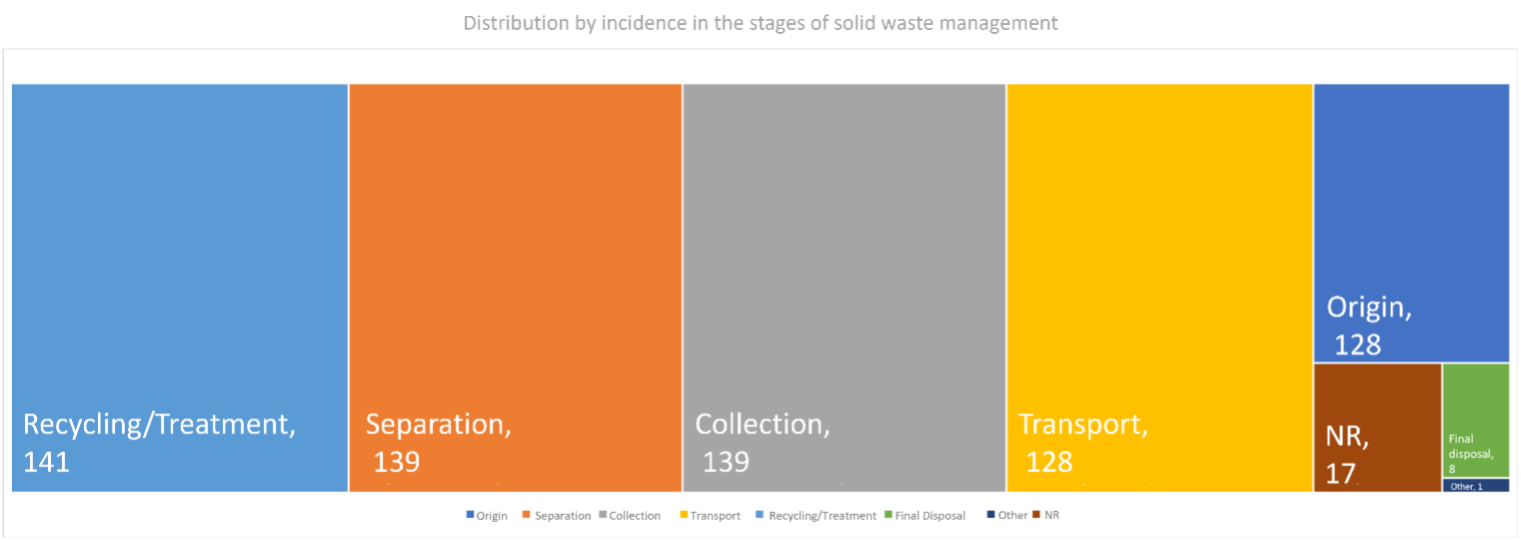
<Distribution by incidence in elements of solid waste management>.
It is important to mention that this mapping stage has been office research to integrate what already exists, so it is still a very panoramic view. However, we take these lessons with us as a starting point for what follows:
- There is a great diversity of ways to understand and describe concepts and actions related to Circular Economy and solid waste management. In the midst of so much diversity, there does not seem to be a shared language.
- The "we are on each other's heels" makes a lot of sense, as we identify a great diversity of actors and events that affect similar issues, taking very similar actions. However, there does not seem to be much articulation or collaboration between these actors.
- A common discussion is that there is not much data to better understand waste management. However, we find that a large amount of data from different actors is scattered and not communicated or shared. So, yes, we need more data, but we also need to share better and communicate what already exists.
- Normally, we tend to dismiss from the landscape the actors and solutions that are no longer there. However, understanding why some organizations, companies or institutional initiatives no longer exist is as important as what is still in place.
In recent years, a large number of community ventures and initiatives have emerged to address the challenge of solid waste, especially outside Panama City. More local solutions need to be identified and recognized, as they are key to accelerating Circular Economy initiatives at the territorial level.
In conclusion, we realized that, in reality, no single actor can understand a system on its own. Doing that implies a collective and intentional effort that allows us to know the current state of the system, its dynamics and behaviors - and then think of alternatives to generate systemic changes.
What is certain is that the landscape will continue to change. It may become healthier or less so, and that will depend on how collectively we can redesign it.
Stay tuned for our next blog, where we will tell you more about the next phase, we will be sharing learnings on system dynamics that we have already begun to identify together with the ecosystem of actors related to the Circular Economy and solid waste management in Panama. Are there any you are interested in exploring? Write to us at laboratorioaceleracion.pa@undp.org

 Locations
Locations